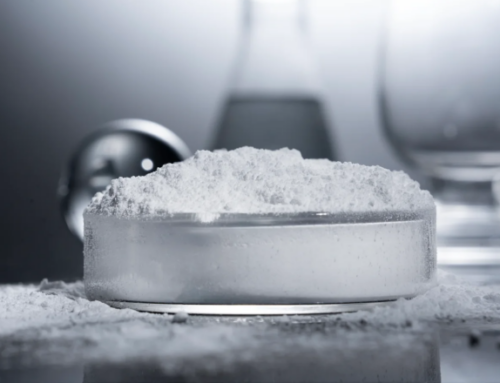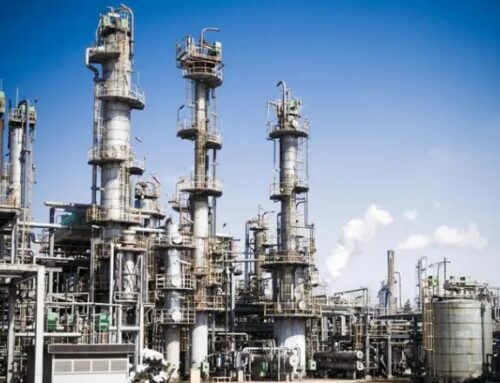Acrylic is one of the world’s largest chemical products and an important basic chemical raw material. Its downstream products are widely used in plastics, household appliances, medical devices, synthetic fibers, cosmetics, and more. The propylene industry is the core of the petrochemical industry and occupies an important position in the national economy. The production of propylene is regarded as one of the important indicators to measure the development level of a country’s petrochemical industry in the world.
Ⅰ Main production process of propylene
In terms of propylene supply, a traditional process route includes steam cracking, refinery catalytic cracking FCC separation, heavy catalytic cracking DCC, etc; In addition, on purpose processes include propane dehydrogenation PDH, olefin disproportionation, MTP, etc.

1. Ethylene cracking by-products
The raw materials for steam pyrolysis of ethylene include naphtha, ethane, ethane/propane, propane, mixed raw materials, butane, LPG, refinery dry gas, diesel, etc.
The ethylene yield in the ethylene cracking process is somewhat related to the operating parameters, but more importantly, it is related to the characteristics of the raw materials. From the perspective of producing more ethylene and propylene, alkanes>cycloalkanes>monocyclic aromatic hydrocarbons>polycyclic aromatic hydrocarbons. The higher the relative molecular weight of ethane to diesel, the lower the yield of ethylene and propylene.
The yield of diene (ethylene+propylene) using ethane as raw material is about 80%, propane as raw material is about 60%, and naphtha as raw material is about 45%. In general, the cracking ethylene production route using naphtha as raw material corresponds to an ethylene yield of about 31% and a propylene yield of 16%; The cracking ethylene route using ethane as raw material corresponds to an ethylene yield of about 80% and a propylene yield of about 3%.
A world-class ethylene cracking plant generally has multiple cracking furnaces, including a circulating ethane cracking furnace, a light raw material cracking furnace, a heavy raw material cracking furnace, etc., to adapt to the diversity of raw materials, so the production of propylene varies greatly.
2. Refinery by-products
Refinery propylene mainly comes from three types of units: catalytic cracking (FCC), visbreaking/thermal cracking, and coking. Among them, FCC propylene accounts for about 97% of refinery propylene and is the second largest source of propylene.
Catalytic cracking is one of the main units for producing gasoline in refineries. Commonly used catalytic cracking technologies can be divided into two categories: one is catalytic cracking to increase gasoline production and reduce olefins, such as MIP, MIP-CGP, FDFCC, MGD, etc; Another type is catalytic cracking technology for producing more low olefins, including DCC, CPP, MIO, MGG, ARGG, etc.
In conventional catalytic cracking, the yield of propylene is about 4%, the yield of ethylene is less than 1%, the yield of mixed butene is 10%, and the yield of gasoline is about 58%; The heavy catalytic cracking DCC technology aims to maximize propylene production, with a propylene yield of over 20%.
3. Propane dehydrogenation PDH
Propane dehydrogenation is an On purpose process that typically requires 1.2 tons of propane and a small amount of hydrogen gas as a byproduct to produce one ton of propylene. It has rapidly developed in recent years and has become an effective supplement to propylene supply.
Propane dehydrogenation is a strongly endothermic reaction, and increasing temperature and decreasing pressure are beneficial for the dehydrogenation reaction to increase yield. Commercial reaction temperatures range from 500-680 degrees Celsius, with pressures between negative and slightly positive pressures. Due to the high-temperature reaction, some light and heavy hydrocarbons are produced as by-products; Thermal decomposition is prone to coking on catalysts, reducing reaction activity, thus requiring frequent catalyst regeneration and complex reactor design.
At present, mature application technologies include UOP’s Oleflex process, Lummus’ Catofin process, and Uhde’s STAR process. The main differences in the process lie in the catalyst, reactor design, and catalyst regeneration method.
4. Olefin disproportionation
Olefin disproportionation is a process in which ethylene and 2-butene are used as raw materials to produce propylene. The mature technologies mainly include Lummus’ OCT process and IFP’s Meta-4 process.
The OCT process requires strict requirements for C4 raw materials. Excessive content of butadiene, isobutene, and polar substances such as sulfur, ether, alcohol, water, etc. can lead to a decrease in catalyst activity.
5. Methanol to olefin MTO, coal to olefin CTO
Using methanol as raw material, or coal through methanol; The yield ratio of ethylene/propylene can be adjusted between 0.77-1.33; There are also MTP processes, represented by Lurgi, that specialize in producing propylene.
A typical MTO device is divided into two parts: methanol conversion and light olefin recovery. Methanol conversion includes: reaction regeneration unit, feed vaporization and product quenching unit; Light hydrocarbon recovery includes: product gas compression and alkali washing, cold separation, thermal separation, propylene refrigeration, and olefin catalytic cracking (OCC) units.
MTO’s product gas contains a certain amount of C4 and C5 olefins, which need to be further converted.
Compared with MTO, MTP lies in the selectivity of the catalyst. Due to the low selectivity of one-way propylene in the reaction, there are still a large amount of ethylene, C4, and C5 at the reactor outlet, which need to be returned to the reaction unit, thus significantly increasing the investment and energy consumption of the device.

Ⅱ Application of propylene
Acrylic belongs to the alkene series of hydrocarbons. Alkenes are unsaturated hydrocarbons that can undergo various addition reactions. The largest amount of propylene is used in the production of polypropylene. In addition, propylene can be used to produce acrylonitrile, isopropanol, phenol and acetone, butanol and octanol, acrylic acid and its esters, as well as epoxy propane and propylene glycol, epoxy chloropropane, and synthetic glycerol.
The proportion of propylene used in the production of organic chemical products in the United States and Western Europe is approximately 30% for polypropylene, 17% for acrylonitrile, 11% for epichlorohydrin, 10% for isopropanol, 9% for isopropylbenzene, 8% for carbonyl synthesis products, and 15% for other varieties. In addition, besides being directly used as fuel in liquefied gas form, propylene can also be combined to produce high octane gasoline.
High concentrations of propylene have anesthetic effects on humans, while at lower concentrations, it can cause irritation to the eyes and skin. Acrylic can form explosive mixtures with air, with an explosive limit of 2.0% to 11% by volume. Leakage of liquid or gaseous propylene poses a risk of fire and explosion. Liquid propylene is stored under pressure at room temperature and can be transported by tank trucks and ships.
The large-scale industrial production and application of propylene are closely related to the development of petroleum refining industry and petrochemicals. In 1920, propylene was obtained from gas separation in oil refineries in the United States, and isopropanol was synthesized from propylene by sulfuric acid hydration method. Following isopropanol, products such as acetone and epichlorohydrin have gradually become important industrial derivatives of propylene. The development of secondary processing technology in refineries has increased the production of both gasoline and propylene. Acrylic is used to produce blended gasoline, which increases the octane rating of the gasoline. The production of ethylene generates a large amount of propylene and promotes the development of organic chemical products using propylene as raw material.
Ⅲ Downstream products of propylene
1. Polypropylene
2. Butyl octanol
3. Epoxy propane
4. Acrylonitrile
5.Acrylic acid

Article source: www.xianjichina.com
M&J International Trading Co., Ltd





